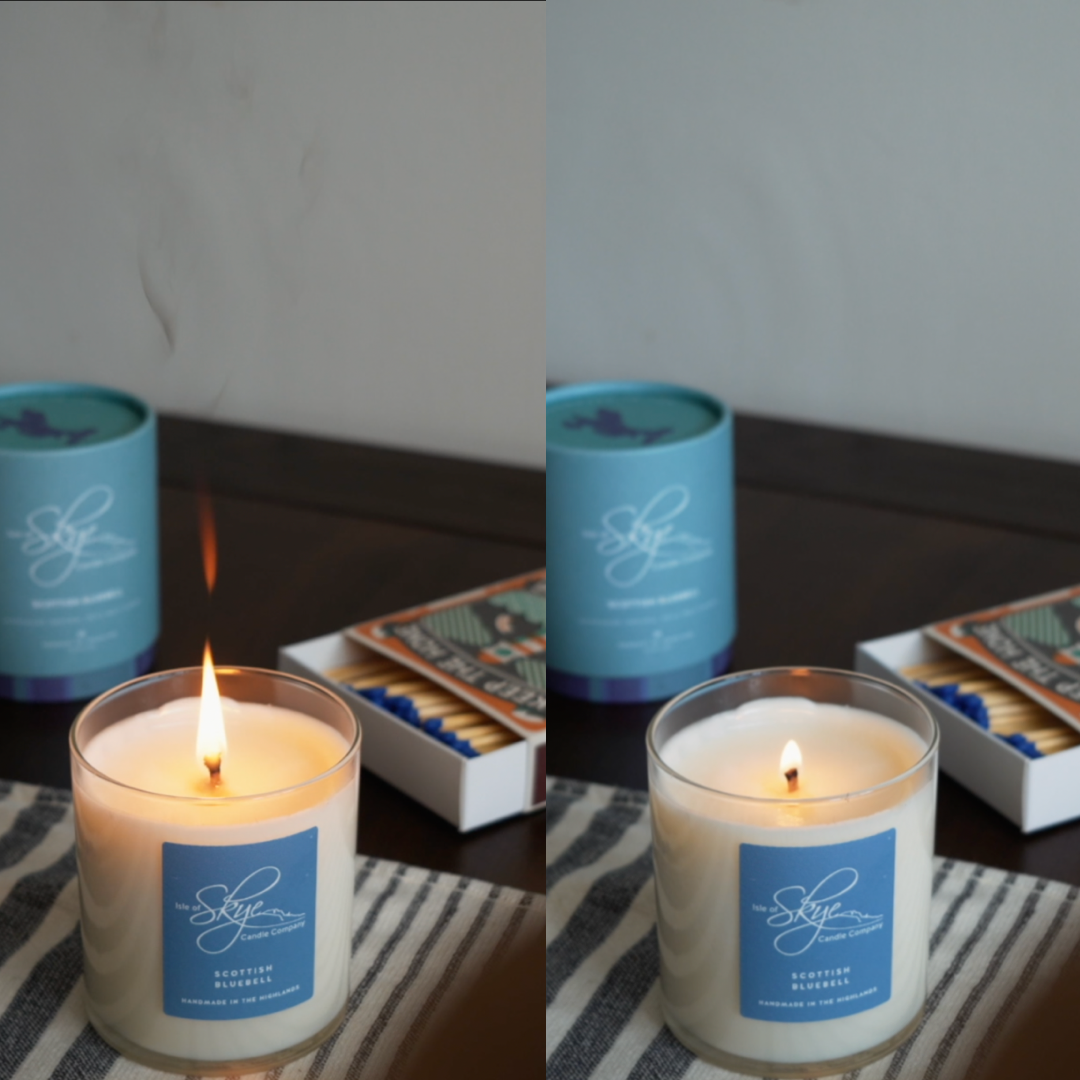Have you ever found yourself frustrated by the black soot that appears around the rim of your candle jar? Soot from candles is a common issue that many people experience, and while a small amount is considered normal, excessive soot shouldn't be something to put up with - especially if your candles are made with care.
At its core, soot is a byproduct of incomplete combustion. This happens when the wax and fragrance oils in your candle don’t burn cleanly, leading to the formation of tiny carbon particles that rise in the smoke and cling to surfaces, including the inside of your candle jar. While all candles emit some degree of soot, a well-made candle should minimise this through thoughtful design and careful material selection.
Here at Skye Candles, we take soot seriously. It took us years of testing to find the perfect wick types and sizes to match our containers and wax. Even now, when we introduce new containers or adjust our wax and oil formulas, we revisit our wick choices to ensure the cleanest burn possible. It’s not just about lighting a wick and hoping for the best—there’s a real science and a process with a lot of trial and error, creating a candle that burns cleanly and safely.
So why does soot happen? Apart from formulation and wick choice, several external factors can also cause your candle to soot more than it should:
-
Burning your candle for too long – Most candles should be burned for a around 3–4 hours at a time. This is true for our candles too, as longer burn sessions can cause the wick to mushroom and generate more soot.
-
Wick length – If you don’t trim your wick to about 5mm before each use, it can lead to a larger flame and increased soot production.
-
Air movement – Drafts from windows, fans, or air vents can disrupt the flame and cause it to flicker, making soot worse.
-
Debris in the wax pool – Leaving bits of matchstick, wick trimmings, or other materials in the melted wax can also contribute to uneven burning and more soot.
Even our carefully crafted candles might show some soot now and then if they're not burned correctly. That’s why we always recommend following our burning guidelines closely—trim your wick, keep your candle away from drafts, and avoid burning for more than 4 hours at a stretch.
Ultimately, a well-made candle should burn cleanly and evenly when cared for properly. If you’re experiencing persistent soot issues, it might be time to evaluate both your candle brand and your burning habits.



Leave a comment